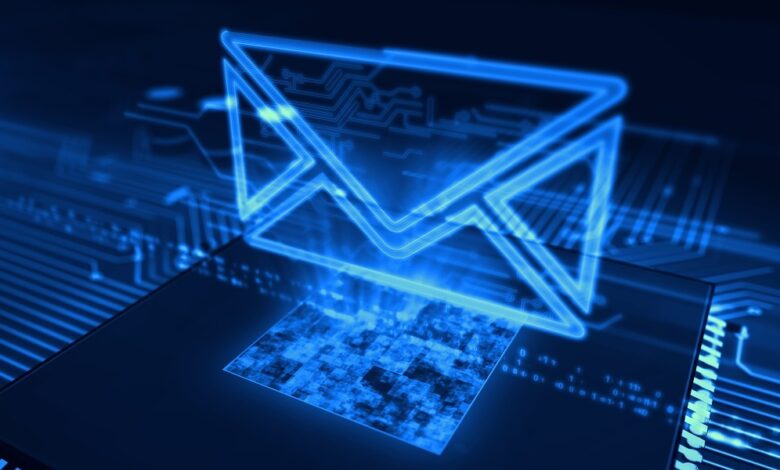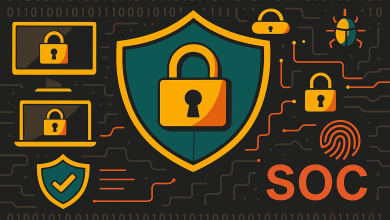
The latest data on email attacks indicates a big rise in phishing attacks, ransomware delivered through email, and the compromise of business emails. As technology advances every day, cybercriminals are increasing the strength and frequency of their attacks regularly.
It can be stipulated that almost all spheres of our daily routine are associated with the usage of digital opportunities in some or other way. Also, with the implementation of digital business strategies they deal with the substantial amount of data at the risk of cyber threats. Thus, the cybersecurity of emails is of great importance, and AI-based scams and threats prevention had a major contribution.
Importance of Artificial Intelligence (AI) in Email Security
AI has a great responsibility concerning the protection of emails since they are the only technology that can address large volumes of data and come up with several patterns, not noticed by humans. It enables the email scam detectors to solve cyber threats as they happen and thus protect organizations and individuals in cyberspace.
New data and the contemporary cyber threats allow the AI algorithms to continue to learn more and adjust their strategies to prevent cyber attacks such as malware, ransomware, phishing, etc More burden is shifted from the human security personnel thus improving the security. When such scam detection is performed by AI, the people concerned can engage in other more strategic processes.
Role & Application of AI Powered Email Scam Detectors
AI allows machines to showcase human-like learning, intelligence, problem-solving, reasoning, and more.
An email scam detector enhances threat detection and mitigation capabilities for traditional security systems. Let’s read about how AI helps with scam detection in emails –
Machine Learning
Machine learning helps develop AI algorithms that can learn from data analysis and make decisions without definite programming. ML algorithms go through huge amounts of data to identify phishing attempts, malware distribution, and other suspicious activities.
Natural Language Processing
NLP is a crucial part of AI-powered scam detection as it allows machines to understand human language. Algorithms check the content of emails to detect malicious activities by identifying suspicious keywords, inconsistencies in grammar, and unusual patterns.
Email Classification & Filtering
AI-powered email filtering categorizes emails according to their content and the reputation of the sender. You can set attributes to prioritize the legitimate emails and filter out malicious and spam emails. By using machine learning algorithms, scam detectors evolve through user feedback, reducing false positives and enhancing the accuracy of scam detection.
Anomaly Detection
Email scam detectors analyze user behavior and email traffic to identify unusual patterns and malicious activities. It helps detect anomalies that may indicate unauthorized access attempts, abnormal location of login, abnormal mail forwarding, and more.
Algorithms mark such anomalies for further investigation, triggering advanced security control mechanisms to control risks.
Automated Response
AI powered email security tools have the ability to automate responses in case threats are detected. This includes blocking suspicious attachments, quarantining malicious mails, and alerting human security teams to investigate the threats further. Automated responses reduce human intervention, minimize response time, and reduce the impact of email attacks.
Predictive Analysis
One way that is put in place by AI algorithms is by going through sets of data and find one that almost replicates a threat’s profile in hopes of early detection. This makes it easier for organisations to be in a position to prevent the new emerging threats before they graduate to end-user threats.
Security Components in AI Powered Email Scam Detectors
Modern scam detectors utilize several tools and systems that are regularly improving. Next, we’ll go through different functions of AI-based email security –
- Encryption Tools – This offers security to the mail content during transit and at rest so that no one can gain unauthorized access. AI enhances encryption algorithms, making sure that it is managed in an efficient manner.
- Authentication Systems – Verifies the identity of the users to ensure authorized access to mails. Machine learning analyzes past login patterns and user behaviors to detect any unusual login attempts.
- Phishing & Spam Filters – Identification and filtering out of phishing and spam emails to protect users from malware and ransomware. Natural language processing analyzes mail content and blocks malicious mail.
- Malware Detection – Scans attachments and emails for harmful content that can infect data and user networks. Signature-based detection and behavioral analysis help identify and separate such harmful files.
- Data Loss Prevention – Monitoring and control of data movement to prevent data leaks through email. AI-powered content analysis helps enforce DLP mechanisms.
AI email scam detector works through continuous learning as algorithms consume new data and learn new things to improve the overall security of the mail system.
Real-time updates on threat intelligence and detection, protection against new threats, etc. enhance the accuracy and reduce false positives as well as missed threats. Thus, teams need to build a preventative and complete approach towards email cybersecurity.
Conclusion
AI powered email scam detectors are pivotal in enhancing email cybersecurity by offering sophisticated, real-time protection against evolving threats. Their capacity to evaluate patterns, detect anomalies, and adapt to new scam techniques guarantees a solid protection mechanism for both individuals and companies.
Embracing these technologies not only enhances email security but also generates a safer digital environment for everyone. Therefore, organizations should understand and take action on the necessity of integrating AI into a holistic cybersecurity strategy.







